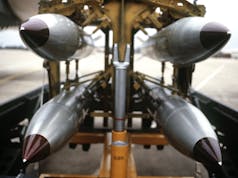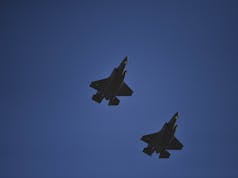A British RC-135W Rivet Joint electronic surveillance aircraft is currently operating off the coast of Syria.
A Royal Air Force RC-135 and US Air Force KC-135 aerial refueling aircraft have been observed off the Syrian coast.
✈️RAF 🇬🇧
RC-135
ZZ664 RRR7206
✈️USAF 🇺🇸
KC-135
58-0069
Heading up the coast of Lebanon / Syria pic.twitter.com/5oLJNLzk6C— Air & Sea Intel (@air_intel) November 3, 2020
The Open Source Intelligence Twitter account Intel Air & Sea followed the event earlier, if you don’t follow them then I’d suggest you go do that now.
This comes not long after British RC-135 and Sentinel surveillance aircraft were operating over Black Sea, this heavy usage demonstrates the apparent utility these aircraft have to the Ministry of Defence.
What does the RC-135W do?
According to the Royal Air Force website, the RC-135W Rivet Joint is a dedicated electronic surveillance aircraft that can be employed in all theatres on strategic and tactical missions. Its sensors ‘soak up’ electronic emissions from communications, radar and other systems.
“RC-135W Rivet Joint employs multidiscipline Weapons System Officer (WSO) and Weapons System Operator (WSOp) specialists whose mission is to survey elements of the electromagnetic spectrum in order to derive intelligence for commanders.”
The Royal Air Force say that Rivet Joint has been deployed extensively for Operation Shader and on other operational taskings. It had been formally named Airseeker, but is almost universally known in service as the RC-135W Rivet Joint.
The UK operates three of these aircraft.














Really dumb question, but the name. Why is it called Rivet Joint?
Not sure, it is American after all. However, we really need to look at new airframe that is future proof or we’ll have another Haden Cave incident. These airframes are well past their best.
It was the project code name and like all code names the connection between the item referred to and the code name should be nil so it is non deducible.
The whole safety case for these KC’s was gone over very throroughtly when they were purchased. And it was looked at through the Haden Cave prism.
Hi SB, But the same issue that delayed Nimrod MRA4 at MAA also delayed Airseeker – an elderly airframe, subject to numerous upgrades over the years – and a lack of provenance.
Hi SB
BTW: On that recent interesting Nimrod debate that we had, I never did get those links you attempted to helpfully post (but were moderated?)
I’ve been looking for this link, lost – but now rediscovered!
https://www.secretprojects.co.uk/threads/bae-systems-nimrod-mra-4.32010/
You might have already seen it …………….
It’s an interesting debate by BAE people about the origins of the MRA4 “wings did not fit” story.
Everything I post with links “disappears”!!
I read that thread a few years ago.
My experience is that different people at BAE either vehemently agree with or oppose the “wings didn’t fit” story……quite hard to get to the truth.
However, one thing that isn’t in doubt is that it got into the public domain via a BAE press release. So it is an official story….which makes it even odder.
The airframes still have a lot of hours left on them since they have only flown a fraction of the hours that a 707 in commercial service would have flown. They have also been refurbished and parts that needed to be replaced have been not too mention engines, systems, ect. Installing all the stuff on a new airframe like the A330, ect would have cost a fortune.
With what is going on with the commercial air companies, it seems like a perfect time to buy up some air frames and out them into storage to be used as parts later on.
Agreed 707 safety case is well understood documented and proved.
The RAF Air Seekers/Rivet Joints were originally KC135 tankers and they were built in the late 60’s. Perhaps they haven’t got similar hours to a commercial jet, but the USAF tanker fleet are not far behind. These airframes are old.